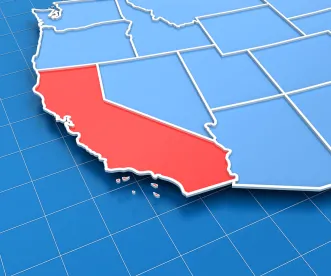On December 27, 2021, the Center for Disease Control and Prevention (CDC) updated their isolation and quarantine recommendations for the general public, including more limited time periods for quarantine and isolation periods. On December 30, 2021, the California Department of Public Health (CDPH) released updated guidance to conform to the new CDC guidelines but added additional requirements, including testing to exit isolation or quarantine after the fifth day (which the CDC now acknowledges is the “best approach” but does not require as part of its formal guidance). Notably, the new guidance also introduces a distinction between boosted and non-boosted individuals for the first time. The key requirements and takeaways from this new guidance are detailed below.
New Isolation and Quarantine Guidance
Positive COVID-19 Cases
All individuals who test positive for COVID-19, regardless of vaccination status, natural immunity, or lack of symptoms, should take the following steps:
-
Isolate for at least five days following the positive test.
-
Wear a “well-fitting mask”* around others for a total of ten days.
-
If symptoms are not present or are resolving and a diagnostic test collected after five days or later is negative, then isolation can end.
-
If an individual chooses not to test (or is unable to), but symptoms are not present or resolving, then isolation can end after 10
*The CDPH guidance recommends that individuals “ideally” use a “surgical mask or respirator” during the days following isolation or exposure.
COVID-19 “Exposure”
The new CDPH guidance provides two options for those who have been “exposed” to COVID-19, depending on whether the individual has been vaccinated or boosted, if booster eligible: **.
Unvaccinated or Vaccinated and “Booster Eligible,” But Not Boosted: If an individual is unvaccinated or vaccinated and “booster eligible” but has not yet received their booster dose, they should take the following steps:
-
Isolate for at least five days after the exposure event.
-
Wear a “well-fitting mask” around others for a total of ten days.
-
If symptoms are not present and a diagnostic test collected after five days or later is negative, then isolation can end.
-
If an individual chooses not to test (or is unable to), but symptoms are not present, then isolation can end after 10
Boosted or Vaccinated But Not Yet “Booster Eligible”: If an individual has received a booster shot or is vaccinated and not yet “booster eligible,” they should take the following steps:
-
The individual does not need to isolate or quarantine.
-
Wear a “well-fitting mask” around others for a total of ten days.
-
The individual should take a diagnostic test on the fifth day after exposure.
**Updated CDPH guidance defines someone as “booster eligible” depending on which vaccine they received and the time period following the recommended doses: Moderna – six months after second dose; Pfizer-BioNTech – six months after second dose; Johnson & Johnson – two months after first dose; WHO emergency-use-listed vaccines – six months after receiving all recommended doses; mix-and-match vaccines – six months after getting all recommended doses.
Key Takeaways for Employers
In the workplace, employers remain subject to the Cal/OSHA COVID-19 Prevention Emergency Temporary Standards (ETS). A summary of Cal/OSHA’s recently amended ETS, which will go into effect on January 14, 2022, is detailed here. However, the new CDPH quarantine and isolation periods will be adopted under the ETS pursuant to Governor Newsom’s executive order requiring Cal/OSHA to adopt CDPH guidelines. Accordingly, it is important for employers to understand the interaction between the new CDPH guidance and the Cal/OSHA ETS.
Notably, CDPH guidance has now introduced the concept of “boosted” individuals for the first time. Under the amended ETS, an asymptomatic fully-vaccinated employee does not need to quarantine as long as they wear a face covering and social distance for the given time period. The new CDPH guidance creates a new distinction between boosted and un-boosted individuals. If an employee is vaccinated and booster-eligible but has not yet received their booster dose, they must stay home for at least five days. While the new CDPH guidance potentially reduces the quarantine period to five days for some individuals, it will require some vaccinated individuals (i.e., those who are “booster eligible” but have not received the shot) to remain at home for five days.
In addition, unlike the new CDPH guidance, the amended ETS requires individuals to wear a face covering and maintain six feet of social distance. Thus, while the shortened time periods under the CDPH guidance will be adopted, California employers will still need to follow the new social distancing requirements beginning on January 14.
It is important to note that employers need to check local quarantine and isolation periods that may be more restrictive. The CDPH guidance specifically notes that “local health jurisdictions may be more restrictive in determining isolation and quarantine recommendations based on local circumstance, in certain higher-risk settings or during certain situations that may require more protective isolation and quarantine requirements (for example, during active outbreaks).”
As the pandemic continues, employers should work closely with legal counsel to monitor local, state, and federal health departments for further changes to COVID-19 health and safety requirements.





 />i
/>i

